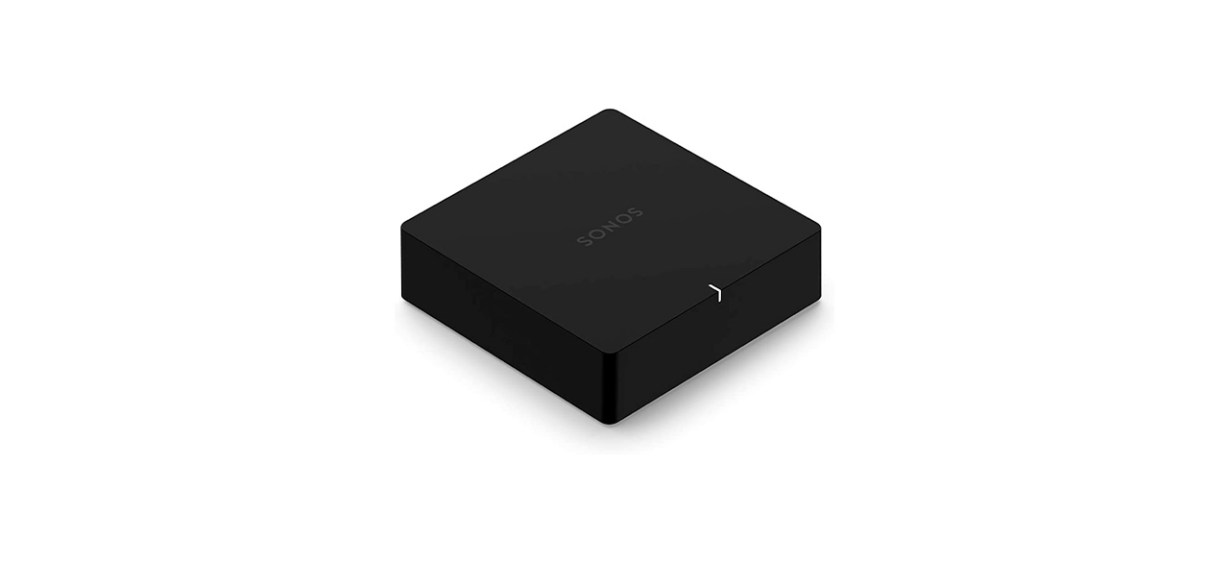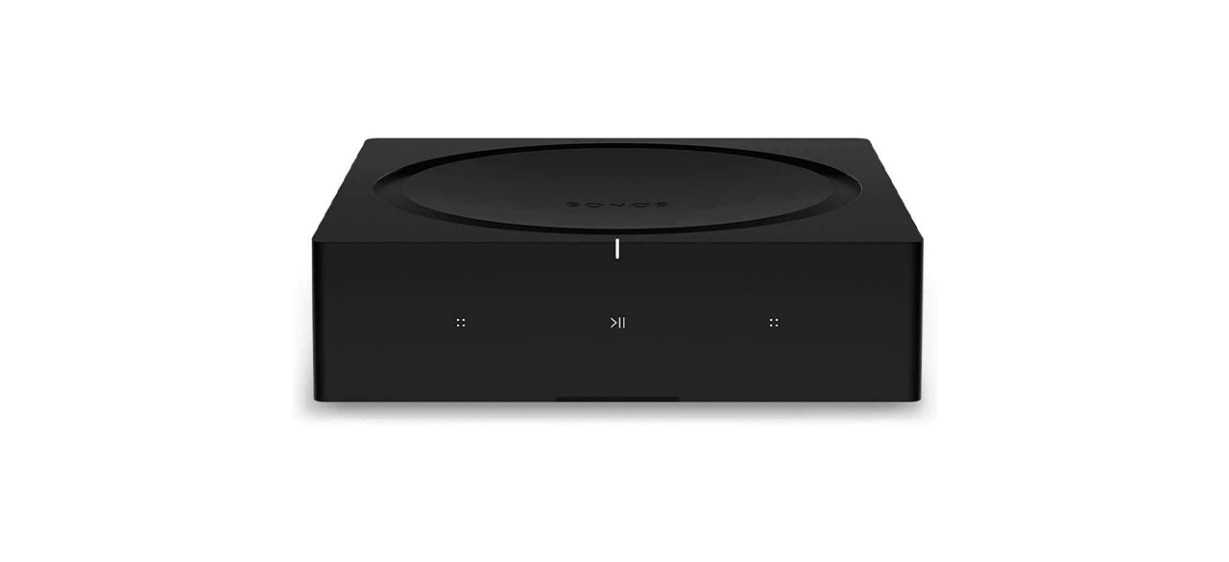Which streaming device is better, Sonos Port or Sonos Amp?
People have used music for millennia to convey messages, ideas and feelings. As technology developed over the last century, we started to bring music into our homes.
It wasn’t until a few decades ago that we could do so without wires, cables or cords. Not everything is wireless, though, which is where Sonos is merging the traditional with the cutting edge.
Sonos Port
Sonos Port is an amazing device in your home if you subscribe to music streaming services but have a home theater system that isn’t wireless. Older systems don’t have Bluetooth connections or Wi-Fi capabilities, so you can’t listen to Spotify through them. But Port lets you do that by connecting the system’s wires to the small box.
Sold by Amazon
Sonos Port pros
The obvious advantage of the Port is that the device lets you stream all your audio apps and services through any active speakers in your home. It is also compatible with Apple’s AirPlay 2, so you’re not limited to only using the Sonos app. Active speakers have a built-in amplifier and only require a power source.
In addition to the Wi-Fi connection and digital coax ports, it has several analog RCA inputs, letting you connect different audio devices, such as a turntable or CD player, using an auxiliary cable. If you run it in conjunction with an amplifier, the automatic 12-volt trigger turns on your amplifier for you.
Sonos Port cons
The Port is an upgraded version of the Connect, which Sonos discontinued in 2020. The announcement and subsequent end-of-life status of the Connect didn’t sit too well with some users, especially those who had bought their gadgets a few months before.
In many ways, users saw the Port as a “con,” as they felt the events were ill-timed. To add to their dismay, there isn’t much technological difference between the Connect and the Port. The company says the Port delivers a richer sound and is updated to be compatible with newer technology, but these are probably features Connect users didn’t miss.
Sonos Amp
Like the Port, the Amp is an updated version of the discontinued Sonos Connect: Amp. It essentially functions the same way as the Port, but there is one significant difference. The Amp powers passive speakers, while the Port cannot.
Sold by Amazon
Sonos Amp pros
The wireless amplifier is an excellent choice if you are looking for a central gadget that you can use to stream all your audio content. It is only compatible with passive speakers, which shouldn’t be an issue for most users.
Passive speakers are the most common in many houses, as they're the default audio source for hi-fi systems or separate speakers that connect through ordinary speaker wires. There are easy-to-use touch controls on the front, and the amplifier produces 125 watts per speaker channel.
For physical connections, the Amp has a line-in and an HDMI ARC port, so you hook up your television or streaming box and have the audio playing through the connected speakers. In addition to your TV, the physical connections let you connect other devices such as a turntable or a CD player.
Wireless capabilities include Wi-Fi and Apple AirPlay. This is handy when listening to music through a streaming service such as Spotify. You simply pair your cellphone with the Amp and select the tracks you want to play. The Amp then transmits the audio through any connected speakers.
Sonos Amp cons
You can’t fault the Amp for only being compatible with passive speakers, which is why Sonos made the Port. If you have either of the speaker systems, there is a gadget for you. However, it would be great if any of the wireless devices could switch between active or passive mode.
You might also run into some trouble if you have bipolar towers with passive speakers and active subwoofers. It can be done, but you’ll need a splitter to connect both subwoofers as the Amp only has one dedicated subwoofer output.
And as with the Port, some users are unhappy with how Sonos managed the rollout of the Amp. It’s the successor to the Sonos Bridge, and the now-discontinued amplifier was still sold only a few months before getting yanked from shelves. This left many Bridge users with a brand-new audio device that stopped receiving updates and firmware upgrades — making it all but obsolete.
Should you get a Sonos Port or Amp?
This is a rare case where neither the release date nor model number decides which is best for you. Rather, it’s determined by your home audio setup. Both provide you with excellent quality streaming through your speakers but use different components to do so.
Simply put, the Port is the better option if you have active speakers in your home. However, if you have passive speakers that draw power directly from an amplifier, the Sonos Amp is the right choice.
To ensure you buy the correct gadget, you must know which speakers you have in your home. It can irreparably damage your home theater system, turntable or outdoor speakers if you use the incorrect player.
But let’s pretend that you have both active and passive speakers. Then which one should you get? Here, the choice becomes a bit clearer in favor of the Amp. It puts out 125 watts per speaker channel, has a sleek design with touch buttons and is compatible with most devices through the wireless connection. These include Sonos’ Sonance range of architectural speakers such as in-ceiling, in-wall or outdoor audio devices.
Want to shop the best products at the best prices? Check out Daily Deals from BestReviews.
Sign up here to receive the BestReviews weekly newsletter for useful advice on new products and noteworthy deals.
Charlie Fripp writes for BestReviews. BestReviews has helped millions of consumers simplify their purchasing decisions, saving them time and money.






